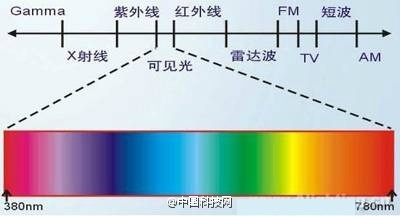
Privacy statement: Your privacy is very important to Us. Our company promises not to disclose your personal information to any external company with out your explicit permission.
The research group led by Ren Tianling, a professor of microelectronics and electronics at Tsinghua University, recently produced a new type of luminescent material from two different forms of graphene. For the first time, it was demonstrated in a graphene-based light-emitting system that only one LED can be used for adjustment. Different colors of light cover almost all colors of the visible spectrum.

New graphene material LED covers almost the entire visible spectrum
The color and wavelength of the light emitting diodes (LEDs) are determined by the luminescent material. Once the preparation is completed, the two properties are determined. So far, the idea of using a single LED to change the color of a light is difficult to achieve. The color-tunable graphene LED developed by Ren Tianling's research team covers red light from a wavelength of 450 nanometers to a wavelength of 750 nanometers, except for dark blue and violet.
The key material for realizing adjustable color LEDs is graphene. From solar cells to semiconductors, graphene has made some achievements as an emerging material, but LED lamps made with this material have not achieved color adjustment until this time. Researchers will make this a reality.
In the conventional display or lighting technology, the existing LED device represents color or synthetic white light by adjusting the brightness of the three primary color light emitting units of fixed red, green, and blue. This breakthrough research achievement, while achieving color fidelity, can also significantly reduce the number of light-emitting units in the display device, thereby greatly optimizing the circuit and reducing power consumption.

According to a recent report from the news network of Tsinghua University, this new type of LED breaks through the color synthesis method of existing display devices and is expected to have a revolutionary impact on display screens, lighting fixtures and communication technologies. As the color of light changes with specific chemicals, such devices may also be used to prepare special sensors. The reviewers commented: "This work is expected to open up new research directions in the field of light-emitting devices." "This work is exciting and influential."
The research results were published online in Nature Communications. Wang Xiaomu, a postdoctoral fellow at Yale University, and Tian Hao, a doctoral graduate in microelectronics and electronics at Tsinghua University, are the co-first authors of the thesis.
November 21, 2022
September 29, 2022
August 10, 2024
April 30, 2024
September 29, 2024
November 18, 2023
Gửi email cho nhà cung cấp này
November 21, 2022
September 29, 2022
August 10, 2024
April 30, 2024
September 29, 2024
November 18, 2023

Privacy statement: Your privacy is very important to Us. Our company promises not to disclose your personal information to any external company with out your explicit permission.

Fill in more information so that we can get in touch with you faster
Privacy statement: Your privacy is very important to Us. Our company promises not to disclose your personal information to any external company with out your explicit permission.